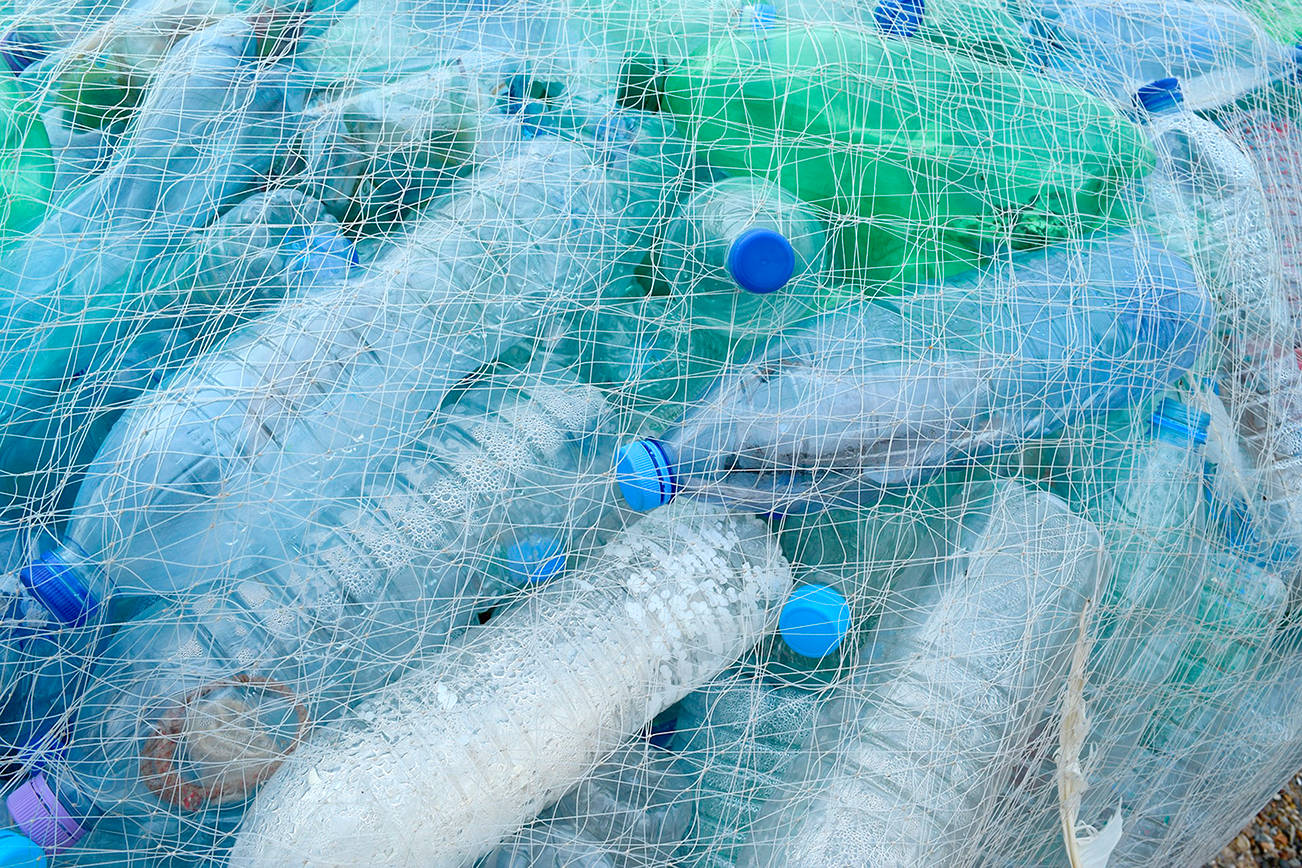Submitted by Lopez Solid Waste Disposal District
In the first article of this series we reported that by the end of 2017, China will stop accepting global imports of many raw recycling materials, including plastics. This will have significant impacts on current recycling efforts across the country. Since most of our plastics are received by China, the Lopez Dump is monitoring this situation and aims to identify and execute proactive solutions where possible.
If new markets do not become available to receive plastics, the quickest solution for many recycling facilities will be to divert plastics back into the waste stream, with customers paying to throw it away as garbage. This approach obviously violates the Lopez Dump’s prime directive and mission of working toward zero waste. Instead we should consider solutions to minimize plastics production, extend its lifecycle and prevent it from degrading our environment. Here are three “big picture” examples.
Government Solutions
Just this summer in San Juan County, a government policy response led to the ban on single-use plastic bags at retailers throughout the county. Policy responses like these that impose broad controls or full restrictions on certain material types (also think Styrofoam or single-serve bottled water) can have some of the greatest long-term impact at the least cost. These “upstream” solutions target the very beginning of a product’s lifecycle, eliminating the need to manage these materials as recycling, garbage, or pollution “downstream.”
The potential of material bans extends much further (Kenya recently imposed a fine of $19,000 or jail time for any person or company importing or distributing plastic bags), but this approach is not likely to succeed in isolation and needs to be part of a broader strategy.
Manufacturer and Distributor Solutions
Many governments instead place responsibility for recovering product/packaging materials on industries, producers, retailers, or consumers. Extended Producer Responsibility (EPR) laws require manufacturers to recover materials from their products or packaging instead of allowing them to go to the landfill. Electronic waste (E-waste) and fluorescent lightbulb recycling function in this way on Lopez Island, with the producers (and often consumers) paying a fee to recover their product once its use is complete. EPRs have the potential of covering an even broader spectrum of manufacturers and product types in the U.S., as they are across much of Europe. The concept of this upstream material recovery can also be widely applied in the shops of local businesses.
Storefront Solutions
Businesses can reduce their material and labor costs if they’re willing to get creative, work in partnership with customers, and speak up to suppliers. The reduction and recovery of packaging products happens creatively and on many different scales at the storefront. From growlers to grains, the bulk sale of goods in reusable containers can reduce some packaging needs by 100 percent — problem solved! Purchasing products in containers that are readily recycled (aluminum) instead of disposed of on Lopez Island (glass) can turn costs into revenues for the dump directly. Putting a deposit price on any bottle or other package (and automating the return process) almost guarantees its return and is a widely used model in many states and countries. After all, the packaging is provided as a service, not something the customer actually wants to own. Think of all of the packaging and products that we purchase and do not have the option to return to the manufacturer where it is most likely to be useful again!
In our next article, we will discuss many brave new opportunities specific to consumer behavior and even the prospect of hyper-local plastics production. Stay tuned and feel free to share your thoughts by emailing info@lopezsolidwaste.org.



